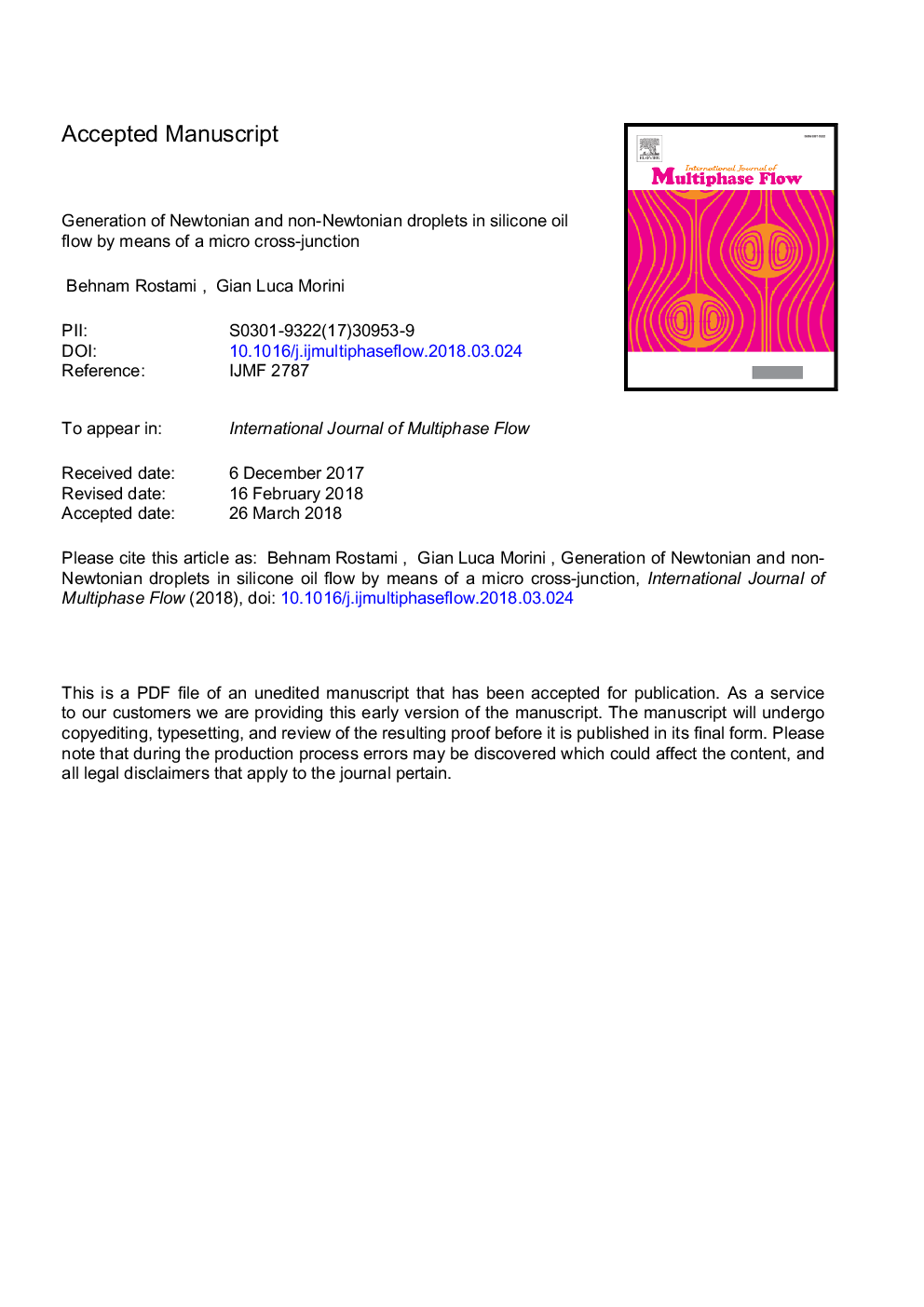| Article ID | Journal | Published Year | Pages | File Type |
|---|---|---|---|---|
| 7060081 | International Journal of Multiphase Flow | 2018 | 48 Pages |
Abstract
In this paper the generation of non-Newtonian and Newtonian droplets in a continuous silicone oil flow through a micro cross-junction has been studied experimentally by focusing the attention on the behavior of the device at values of continuous Capillary number (Cac) larger than 0.01. Different liquids have been used as dispersed phase: (i) pure water; (ii) water with Tween 20; (iii) Xanthan gum aqueous solutions. A wide range of volumetric flow rates of the continuous and dispersed phase have been imposed at the inlets of the micro cross-junction with the aim to correlate the main droplet regimes (squeezing, dripping and jetting) to the continuous and dispersed Capillary number (Cac, Cad) and to the volumetric flow rate ratio (α). The role of the viscosity ratio of the immiscible liquids (λ) on the droplet regime is discussed. The experimental results confirm that the transition between squeezing and dripping depends mainly on the Capillary number associated to the continuous phase and not on the viscosity ratio. On the contrary, larger viscosity ratio values tend to reduce the Capillary number in correspondence of which the transition between dripping and jetting is observed. In addition, it has been observed that an increase in the viscosity of the dispersed phase tends to reduce the range of the operative conditions in correspondence of which monodispersed emulsions can be generated.
Related Topics
Physical Sciences and Engineering
Chemical Engineering
Fluid Flow and Transfer Processes
Authors
Behnam Rostami, Gian Luca Morini,
